The battle between luxury SUVs often leads consumers down two distinct yet closely related paths: that of the Audi Q7 and the VW Touareg. Both are adept at providing the comfort, performance, and technological innovation that drivers seek in modern SUVs, but slight differences make each vehicle unique. This comparison delves into what these two powerhouses offer, from performance and design to innovative features.
Audi Q7 vs VW Touareg – Performance, range & efficiency compared
Two cars, one duel: Audi Q7 meets VW Touareg.
Which one wins in performance, efficiency and value for money? Find out now!
Performance and Powertrain
The Audi Q7 presents a robust engine lineup that includes Diesel MHEV, Plugin Hybrid, Petrol MHEV, and Petrol options. Power output ranges from an impressive 231 HP to a staggering 507 HP, with torque figures peaking at 770 Nm, allowing it to accelerate from 0-100 km/h in as little as 4.1 seconds. The Q7 is all-wheel drive, ensuring traction in diverse conditions, while its fuel consumption ranges from 1.2 L/100 km in hybrid trims to 12 L/100 km for sportier variants.
On the other hand, the VW Touareg keeps things simpler with its Diesel and Petrol engines, producing 231 HP to 340 HP, with a maximum torque output of 600 Nm. While slightly less potent compared to the Q7, it still boasts respectable acceleration figures, achieving 0-100 km/h in 6.1 seconds. The Touareg's consumption averages between 8 to 11 L/100 km, making it only marginally less efficient than its Audi counterpart.
Dimensions and Cargo Space
In terms of size, the Audi Q7 takes the lead with a length of 5072 mm compared to the Touareg's 4902 mm. The Q7 is designed to accommodate either five or seven passengers, thereby offering more versatility for larger families or travel needs. The trunk capacity of the Q7 ranges from 563 L to 887 L depending on the seating configuration, allowing for ample storage for luggage or gear.
The Touareg, while smaller, also provides substantial cargo space at 810 L. It comfortably seats five and has a curb weight that varies from 2055 kg to 2118 kg, making it slightly lighter than the Q7 in most configurations. Both vehicles, however, are designed with user-friendliness in mind, ensuring ease of access and usability in daily situations.
Interior and Technology
When it comes to luxury and technological advancements, the Audi Q7 leans heavily on its reputation for high-quality interiors packed with advanced gadgets. Featuring the latest MMI infotainment system, digital cockpit, and high-grade materials, the Q7 offers an exceptional driving experience that combines sophistication with functionality. Innovative features, such as adaptive air suspension and driver assistance systems like adaptive cruise control and lane-keeping assist, add to its appeal.
The VW Touareg, although slightly more utilitarian in its approach, does not fall short in terms of technology. It includes a modern infotainment system and a virtual cockpit that provides drivers with key information right in their line of sight. Safety features are also robust, featuring systems designed to enhance passenger safety and driving confidence. Adaptable seating and cargo configurations further enhance its practicality for everyday use.
Conclusion: Which SUV Reigns Supreme?
Ultimately, choosing between the Audi Q7 and the VW Touareg comes down to personal needs and preferences. The Q7 is a standout option for those desiring a larger, more powerful SUV with versatile seating and cutting-edge technologies. Meanwhile, the Touareg is perfect for customers looking for a capable, slightly more affordable SUV that doesn’t compromise on comfort or features.
Both vehicles present a compelling case for themselves, and your decision will depend on weighing factors such as performance priorities, space requirements, and brand allegiance. Whatever your choice, either the Q7 or the Touareg promises an exceptional driving experience in the luxury SUV segment.
Here’s where it gets real: The technical differences in detail
Costs and Efficiency:
When it comes to price and running costs, the biggest differences usually appear. This is often where you see which car fits your budget better in the long run.
VW Touareg has a hardly perceptible advantage in terms of price – it starts at 63200 £, while the Audi Q7 costs 69300 £. That’s a price difference of around 6115 £.
Fuel consumption also shows a difference: Audi Q7 manages with 1.20 L and is therefore significantly more efficient than the VW Touareg with 2.20 L. The difference is about 1 L per 100 km.
As for range, the Audi Q7 performs clearly perceptible better – achieving up to 84 km, about 33 km more than the VW Touareg.
Engine and Performance:
Power, torque and acceleration say a lot about how a car feels on the road. This is where you see which model delivers more driving dynamics.
When it comes to engine power, the Audi Q7 has a barely noticeable edge – offering 507 HP compared to 462 HP. That’s roughly 45 HP more horsepower.
In acceleration from 0 to 100 km/h, the Audi Q7 is clearly perceptible quicker – completing the sprint in 4.10 s, while the VW Touareg takes 5.10 s. That’s about 1 s faster.
There’s no difference in top speed – both reach 250 km/h.
There’s also a difference in torque: Audi Q7 pulls barely noticeable stronger with 770 Nm compared to 700 Nm. That’s about 70 Nm difference.
Space and Everyday Use:
Whether family car or daily driver – which one offers more room, flexibility and comfort?
Seats: Audi Q7 offers clearly perceptible more seating capacity – 7 vs 5.
In curb weight, Audi Q7 is hardly perceptible lighter – 2055 kg compared to 2059 kg. The difference is around 4 kg.
In terms of boot space, the Audi Q7 offers minimal more room – 887 L compared to 810 L. That’s a difference of about 77 L.
In maximum load capacity, the Audi Q7 performs distinct better – up to 2255 L, which is about 455 L more than the VW Touareg.
When it comes to payload, Audi Q7 somewhat takes the win – 885 kg compared to 751 kg. That’s a difference of about 134 kg.
Who wins the race?
The Audi Q7 proves to be wins the duel decisively and therefore becomes our DriveDuel Champion!
Audi Q7 is the better all-rounder in this comparison.
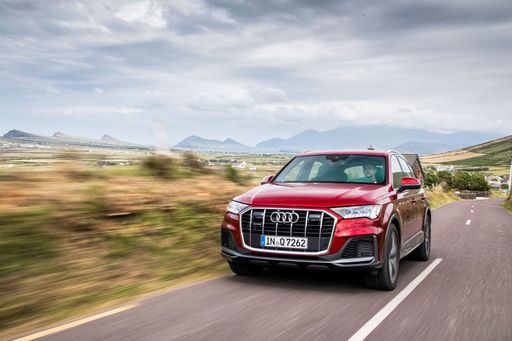 @ Audi AG
@ Audi AG
Audi Q7
Audi Q7
The Audi Q7 combines luxurious comfort with impressive versatility, making it a standout choice in the SUV market. Its sophisticated design and meticulous attention to detail create an elegant yet robust presence on the road. With advanced technology and a focus on safety, the Q7 ensures a premium driving experience for both the driver and passengers.
details @ Audi AG
@ Audi AG
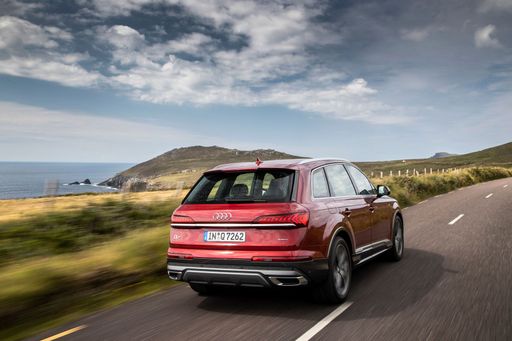 @ Audi AG
@ Audi AG
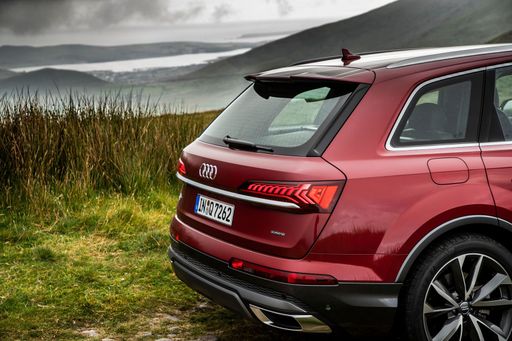 @ Audi AG
@ Audi AG
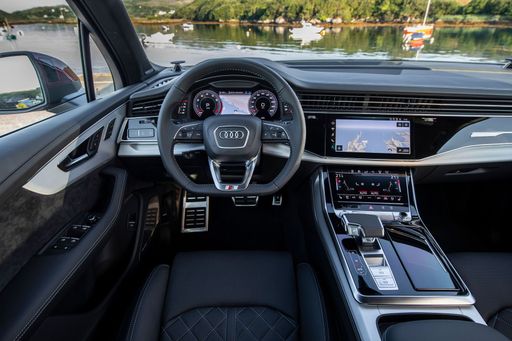 @ Audi AG
@ Audi AG
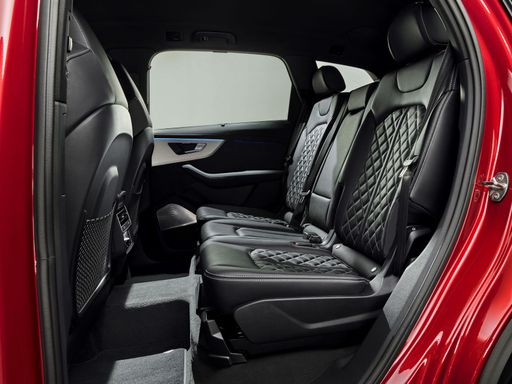 @ Audi AG
@ Audi AG
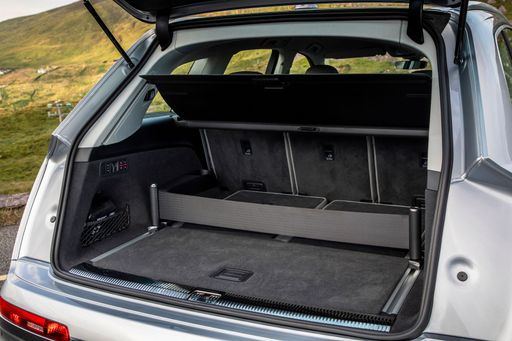 @ Audi AG
@ Audi AG
VW Touareg
The VW Touareg stands out in the luxury SUV market with its blend of sophisticated design and advanced technology. Its interior exudes an air of refinement, featuring premium materials and state-of-the-art infotainment systems. On the road, the Touareg offers a smooth and dynamic driving experience, effortlessly combining power and precision handling.
details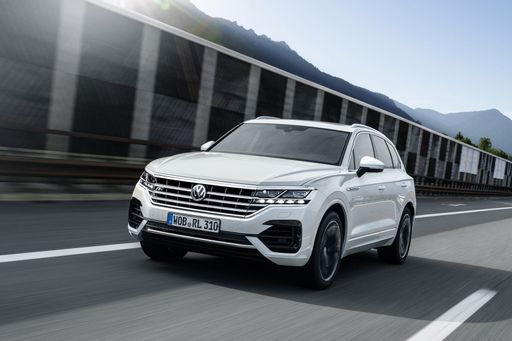 @ Volkswagen AG / VW Media
@ Volkswagen AG / VW Media
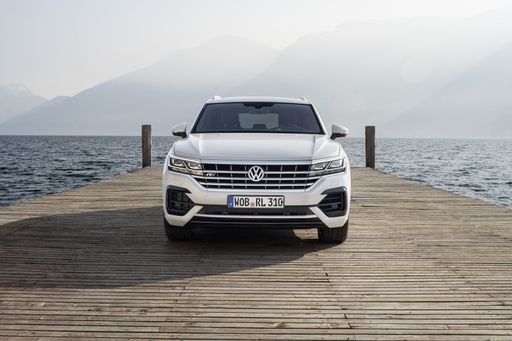 @ Volkswagen AG / VW Media
@ Volkswagen AG / VW Media
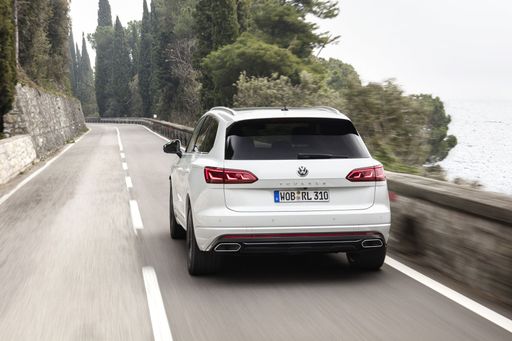 @ Volkswagen AG / VW Media
@ Volkswagen AG / VW Media
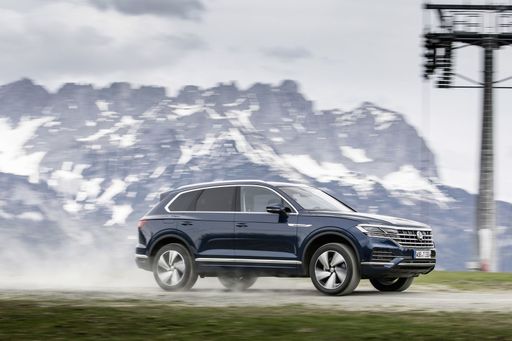 @ Volkswagen AG / VW Media
@ Volkswagen AG / VW Media
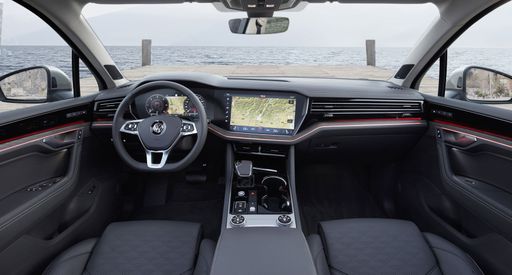 @ Volkswagen AG / VW Media
@ Volkswagen AG / VW Media
 @ Audi AG
@ Audi AG
|
 @ Volkswagen AG / VW Media
@ Volkswagen AG / VW Media
|
|
|
|
Costs and Consumption |
|
|---|---|
|
Price
69300 - 99000 £
|
Price
63200 - 86000 £
|
|
Consumption L/100km
1.2 - 11.9 L
|
Consumption L/100km
2.2 - 10.5 L
|
|
Consumption kWh/100km
-
|
Consumption kWh/100km
-
|
|
Electric Range
83 - 84 km
|
Electric Range
48 - 51 km
|
|
Battery Capacity
22 kWh
|
Battery Capacity
14.30 kWh
|
|
co2
28 - 271 g/km
|
co2
48 - 239 g/km
|
|
Fuel tank capacity
75 - 85 L
|
Fuel tank capacity
75 L
|
Dimensions and Body |
|
|---|---|
|
Body Type
SUV
|
Body Type
SUV
|
|
Seats
5 - 7
|
Seats
5
|
|
Doors
5
|
Doors
5
|
|
Curb weight
2055 - 2460 kg
|
Curb weight
2059 - 2470 kg
|
|
Trunk capacity
563 - 887 L
|
Trunk capacity
665 - 810 L
|
|
Length
5072 mm
|
Length
4878 - 4902 mm
|
|
Width
1970 mm
|
Width
1984 mm
|
|
Height
1703 - 1735 mm
|
Height
1693 - 1712 mm
|
|
Max trunk capacity
1863 - 2255 L
|
Max trunk capacity
1675 - 1800 L
|
|
Payload
640 - 885 kg
|
Payload
550 - 751 kg
|
Engine and Performance |
|
|---|---|
|
Engine Type
Petrol MHEV, Plugin Hybrid, Diesel MHEV, Petrol
|
Engine Type
Plugin Hybrid, Petrol, Diesel
|
|
Transmission
Automatic
|
Transmission
Automatic
|
|
Transmission Detail
Automatic Gearbox
|
Transmission Detail
Automatic Gearbox
|
|
Drive Type
All-Wheel Drive
|
Drive Type
All-Wheel Drive
|
|
Power HP
231 - 507 HP
|
Power HP
231 - 462 HP
|
|
Acceleration 0-100km/h
4.1 - 7.1 s
|
Acceleration 0-100km/h
5.1 - 7.7 s
|
|
Max Speed
226 - 250 km/h
|
Max Speed
222 - 250 km/h
|
|
Torque
500 - 770 Nm
|
Torque
450 - 700 Nm
|
|
Number of Cylinders
6 - 8
|
Number of Cylinders
6
|
|
Power kW
170 - 373 kW
|
Power kW
170 - 340 kW
|
|
Engine capacity
2967 - 3996 cm3
|
Engine capacity
2967 - 2995 cm3
|
General |
|
|---|---|
|
Model Year
2025
|
Model Year
2023 - 2025
|
|
CO2 Efficiency Class
G, B
|
CO2 Efficiency Class
B, G
|
|
Brand
Audi
|
Brand
VW
|
Is the Audi Q7 offered with different drivetrains?
Available configurations include All-Wheel Drive.
The prices and data displayed are estimates based on German list prices and may vary by country. This information is not legally binding.
